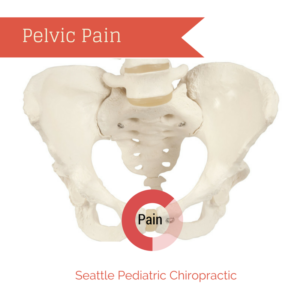Pelvic Pain
Pelvic pain can occur over the course of your pregnancy, during labor or even after delivery. It is very common for moms to struggle with pelvic pain, feeling helpless and unsure where to go for help.
During pregnancy, the mother’s pelvis takes on additional stress that can cause misalignment. This stress can cause muscle imbalances, which will pull the pelvis in one direction or another. Furthermore, in preparation for birth, the mother’s body releases the hormone relaxin, which encourages ligaments of the pelvis to stretch in order to support the birthing process. In some cases, when paired with muscle imbalances, the ligaments attached to the pelvis overstretch and become dysfunctional and misaligned. This can cause pain. The pelvic pain is most notable in the back of the pelvis (sacroiliac joints) or the front (pubic symphysis).
Some common signs and symptoms include but are not limited to the following: Low back pain, tenderness upon palpation of the pubic symphysis, swelling over the pubic symphysis, pelvic pain getting out of bed, popping or clicking of the pelvis with movement. Twisting motions, walking, especially up or down stairs, are also common findings in my patients with pelvic pain. Often during delivery the woman will report hearing a “pop” sound and will be unable to walk or find walking extremely painful.
Understanding the role of the pelvis over the course of pregnancy and into motherhood is very important. Most essential, the pelvis is responsible for supporting the growing fetus and stabilizing the mother’s low back and torso. The better aligned and more balanced a mother’s pelvis, the more comfortable the mother and child.
Chiropractic care can be very beneficial prenatally, during labor and once the baby has been delivered. There are several techniques that are specific to realigning the pelvis. Muscle work is also helpful in removing the muscle imbalances and to compliment the gentle adjustments. I often prescribe simple and effective exercises to reinforce the new alignment and restore functional movement of the pelvis. All of these together help reduce the recovery time and get mom out of pain.
Pelvic pain, specifically over the pubic symphysis, is a condition I commonly see in my practice. In several cases, mom is worried about her pain, but even more frustrated she can’t take care of her child because of that pain. With simple treatment and modification, I am fortunate enough to help mom through this difficult time allowing her to get back to focusing on her new baby.

